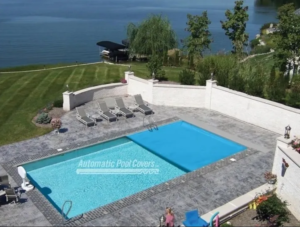
See It Before You Sign: Why Visiting Active Dock-Build Sites Matters
Buying a floating dock isn’t like ordering patio furniture—it’s a major, long-term investment that lives in an unforgiving environment. Marketing photos and glossy brochures can look impressive, but they never tell the whole story. The most reliable way to know what you’re paying for is to step onto an active job site (or at least a freshly finished dock) and let the details speak for themselves. Here’s why the visit matters—and exactly what to inspect before you sign a contract.
1. Weld Quality: The Quiet Indicator of Longevity
Start with the skeleton: aluminum or steel framing. Good welds look smooth and even, almost like rows of tiny coins laid edge-to-edge. There shouldn’t be gaps, spatter, or discoloration that suggests overheating. Give the joints a gentle tap with a knuckle; a clear “ring” hints at solid penetration, while a dull thud can signal trapped pockets or weak spots. Don’t feel awkward leaning down for a close look—this metal must withstand decades of wave slap and tidal flex.
2. Flotation Chambers: More Than a Big Plastic Box
Most floats are rotational-molded polyethylene filled with closed-cell foam. When touring a build, ask the crew to show you a cutaway or spare chamber. Check that:
- Wall thickness feels substantial, not flimsy.
- Foam coreis dense and water-impervious; cheap beads crumble under fingernails.
- Seams and lids are fully sealed—no half-hearted silicone beads.
If the site is active, watch how floats are positioned: they should nest snugly within the frame without wobble. Loose fits invite torsion and premature wear.
3. Anchoring Methods: The Difference Between Stable and “Surfing”
In South Florida’s intra-coastal channels, tides can swing two-plus feet, and boat wakes slam docks at odd angles. Inspect the anchoring system in place:
- Piles – Are they marine-grade treated wood, concrete, or heavy-wall steel? Look for uniform driving depth and proper wrap/boot protection where piles meet brackets.
- Seaflex or elastic rodes – If lines replace rigid piles, verify they’re sized for local fetch and current, with stainless shackles and anti-chafe guards.
- Pivot brackets – Bolts should be 316 stainless, washers doubled, and cotter-pinned—not just snugged with a cordless impact driver.
Stand on the dock, rock side to side, and feel how quickly it dampens movement. Excess sway now means amplified motion when a nor’easter rolls through.
4. Hardware & Fasteners: Small Parts, Big Headaches
Galvanic corrosion sneaks up fast in brackish water. Check that all bolts, cleats, and hinges are 316 stainless or properly coated. Mixed-metal contact—say, zinc bolts through aluminum plate—sets up galvanic couples that eat away at fittings. Ask whether washers are nylon-isolated or if dielectric paste is used on threads. These little touches forecast whether you’ll be tightening hardware every six months or enjoying seasons of maintenance-free use.
5. Decking and Edge Protection: Comfort Meets Durability
Walk barefoot if possible; texture should feel slip-resistant yet comfortable. Gaps between boards need to be consistent for drainage but not wide enough to swallow a small dog’s paw. Rub a hand along the edge bumpers—quality builders install UV-stable rubber or PVC that won’t chalk or crack after one blistering summer.
6. Worksite Professionalism: A Clue to Future Service
While technical details matter, so does observing the crew. Are tools organized, cords coiled, trash contained? A tidy site often reflects a systematic approach to projects—and hints at how responsive the builder will be if you need tweaks later.
7. Talk to Nearby Dock Owners
If you’re touring a marina build, strike up a conversation with boat owners already using earlier phases of the project. Ask about post-installation support, warranty claims, and day-to-day performance. Unfiltered reviews from people who put the docks through real-world abuse are gold.
Final Takeaway
Seeing a dock under construction turns abstract specifications into tactile proof. When you watch craftsmen lay flawless welds, test the bounce of fresh decking, and inspect anchoring hardware up close, you replace marketing promises with firsthand confidence. Take notes, snap photos, and trust your observations—because once your signature dries, that dock will be part of your waterfront life for years to come.
This post was written by a professional at Supreme Marine Floating Docks. Supreme Marine Floating Docks is dedicated to providing top-quality floating docks and marine accessories that combine durability, innovation, and superior performance. While we are a new brand, our team brings over 50 years of combined industry experience, making us a trustedname in the marine world. We are passionate about designing and delivering products that meet the highest standards, ensuring reliability and longevity in all marine environments. Whether for residential, commercial, marina docks Palm Beach, our docks are crafted with precision and care, setting a new benchmark in the industry. At Supreme Marine, we don’t just build docks—we create lasting solutions.


